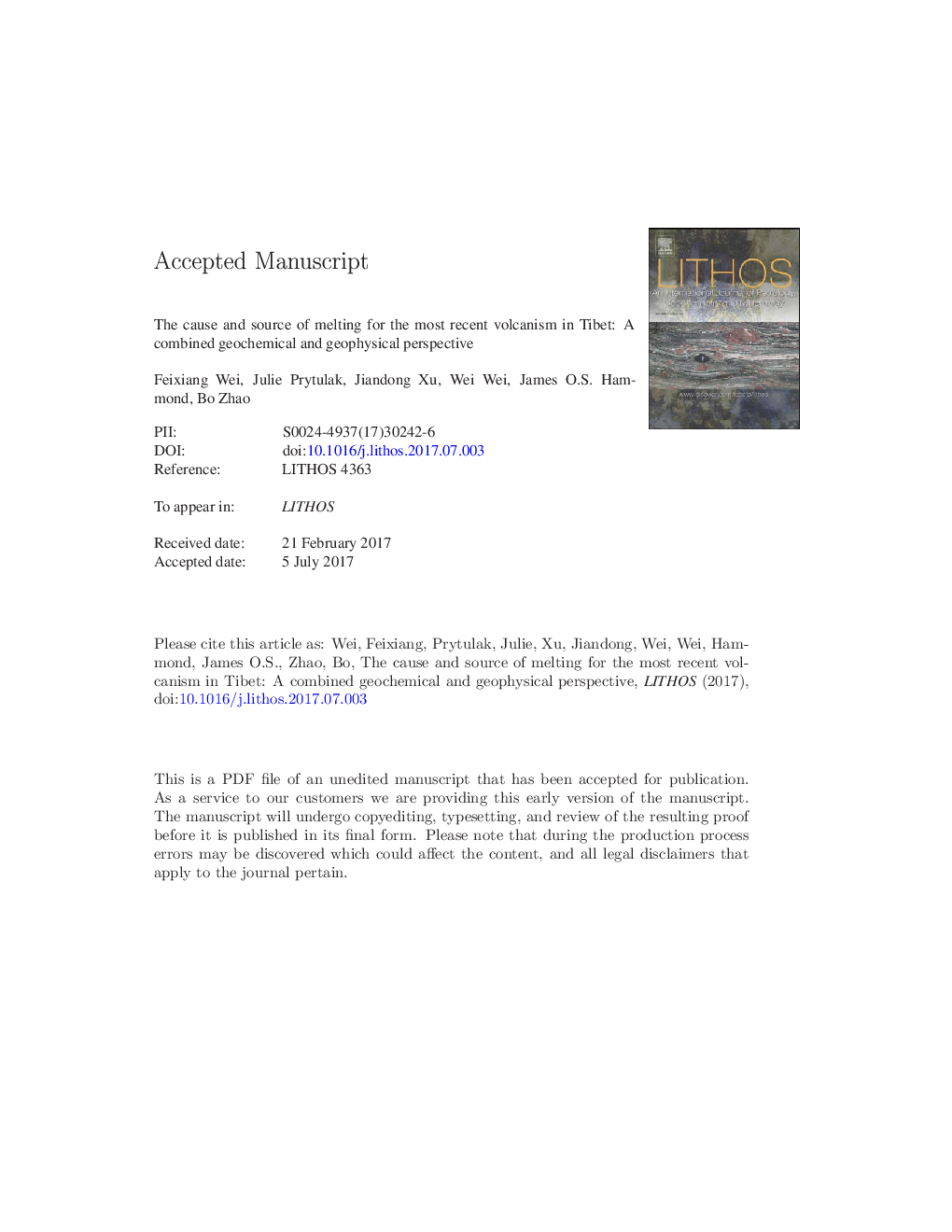| Article ID | Journal | Published Year | Pages | File Type |
|---|---|---|---|---|
| 5784008 | Lithos | 2017 | 62 Pages |
Abstract
We investigate the youngest volcanic activity on the Tibetan Plateau by combining observations from petrologic, geochemical and seismic tomography studies. Recent (from 2.80Â Ma to present) post-collisional potassium-rich lavas from the Ashikule Volcanic Basin (AVB) in northwestern Tibet are characterised by remarkably enriched light rare earth elements (LREE) relative to heavy rare earth elements (HREE), and enriched large ion lithophile element (LILE) relative to high field strength elements (HFSE). Strontium and neodymium isotopic compositions are surprisingly restricted, and show little evidence for mixing or crustal contamination, despite the thick crust upon which they are erupted. Geochemical characteristics indicate a homogeneous source, highly enriched in trace elements, which is most consistent with derivation from long-lived subcontinental lithospheric mantle (SCLM). P-wave anisotropy tomography documents a gap between the north-subducting Indian slab and south-subducting Tarim slab directly beneath the AVB. We propose that volcanism in northwestern Tibet is associated with the progressive closure of this gap, during which shear heating of the SCLM can generate localised melting, with deep-seated faults providing a mechanism for erupted lavas to escape large-scale crustal contamination and fractionation in magma reservoirs. Thus, shear heating may provide an explanation for the restricted range of radiogenic isotope compositions from a SCLM source that should be, by its nature, heterogeneous on a large scale.
Related Topics
Physical Sciences and Engineering
Earth and Planetary Sciences
Geochemistry and Petrology
Authors
Feixiang Wei, Julie Prytulak, Jiandong Xu, Wei Wei, James O.S. Hammond, Bo Zhao,
